Abstract
This study was designed to investigate changes in cardiac performance during hypoglycemia produced by the administration of insulin in the newborn piglet. With heart rate, aortic pressure, and aortic flow held constant, the treated group demonstrated a pronounced positive inotropic response manifested by an increase of dP/dt max to 138% of control values. Central nervous system function and beta adrenergic activity were excluded from the preparation by ligation of the brachiocephalic vessels and administration of practolol. For reasons discussed, it is unlikely that the findings can be ascribed to glucagon contamination. Therefore, the increase in contractility presumably resulted from a direct effect of insulin upon the myocardium. Clinical and laboratory data suggest that the resistance of the neonate to hypoxia is modified by glycogen stores. Insulin is known to increase glycogen synthesis, and this effect might be expected to augment myocardial resistance to hypoxia. Under the conditions of these experiments, however, pretreatment with insulin had no demonstrable influence on the rate of deterioration of cardiac function during hypoxia. The mechanism of cardiac stimulation by insulin is unknown but may involve calcium fluxes.
Full text
PDF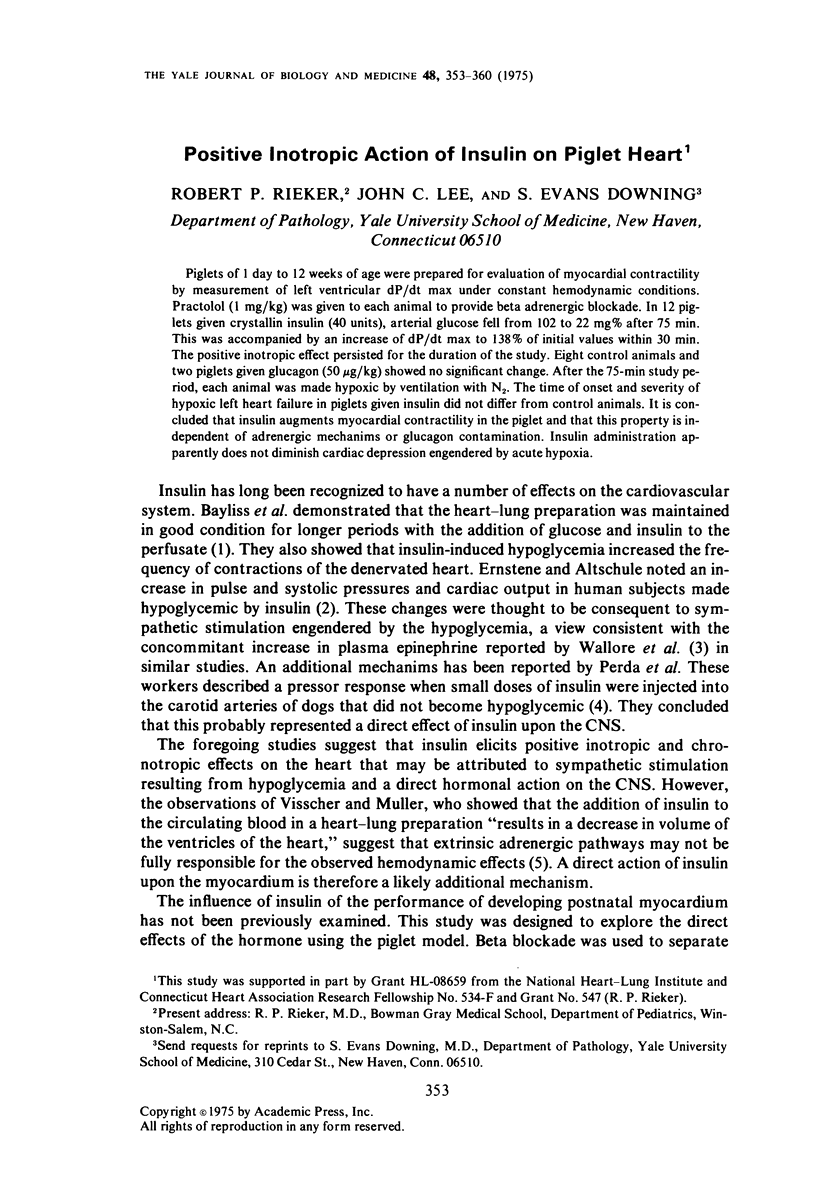
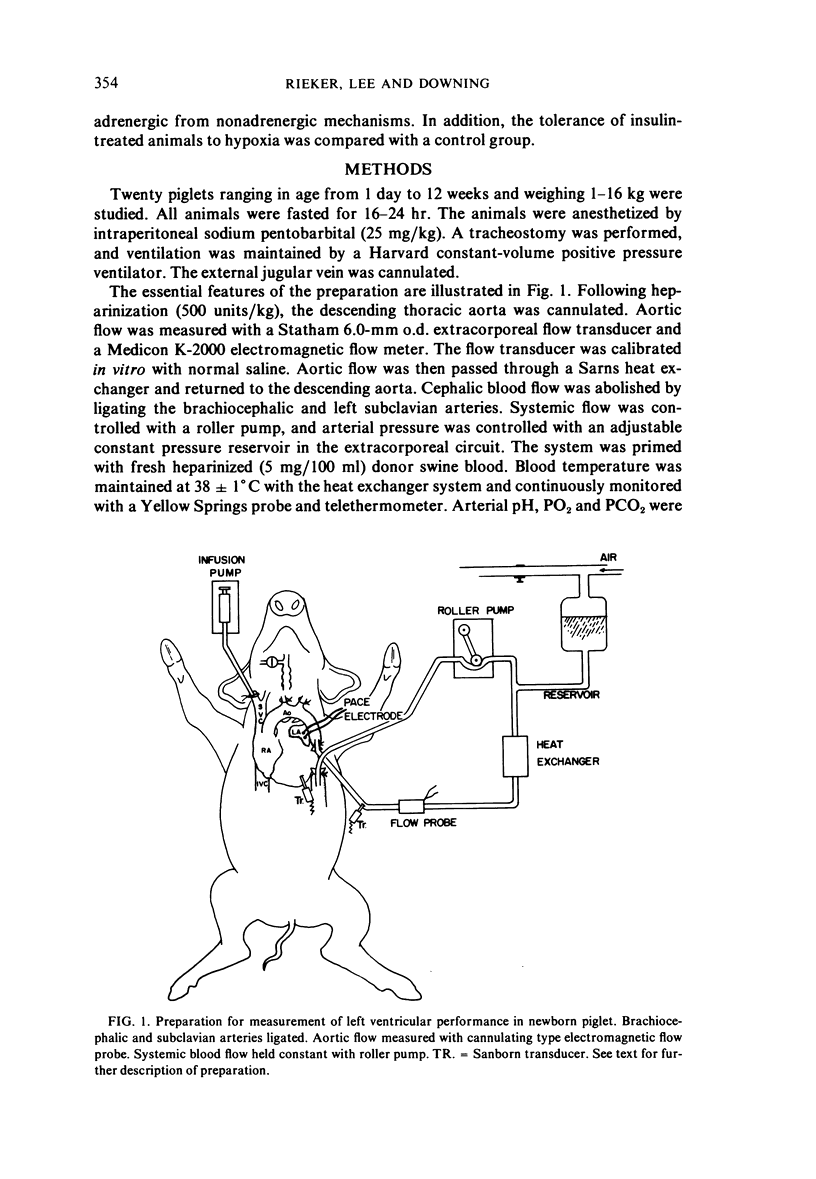
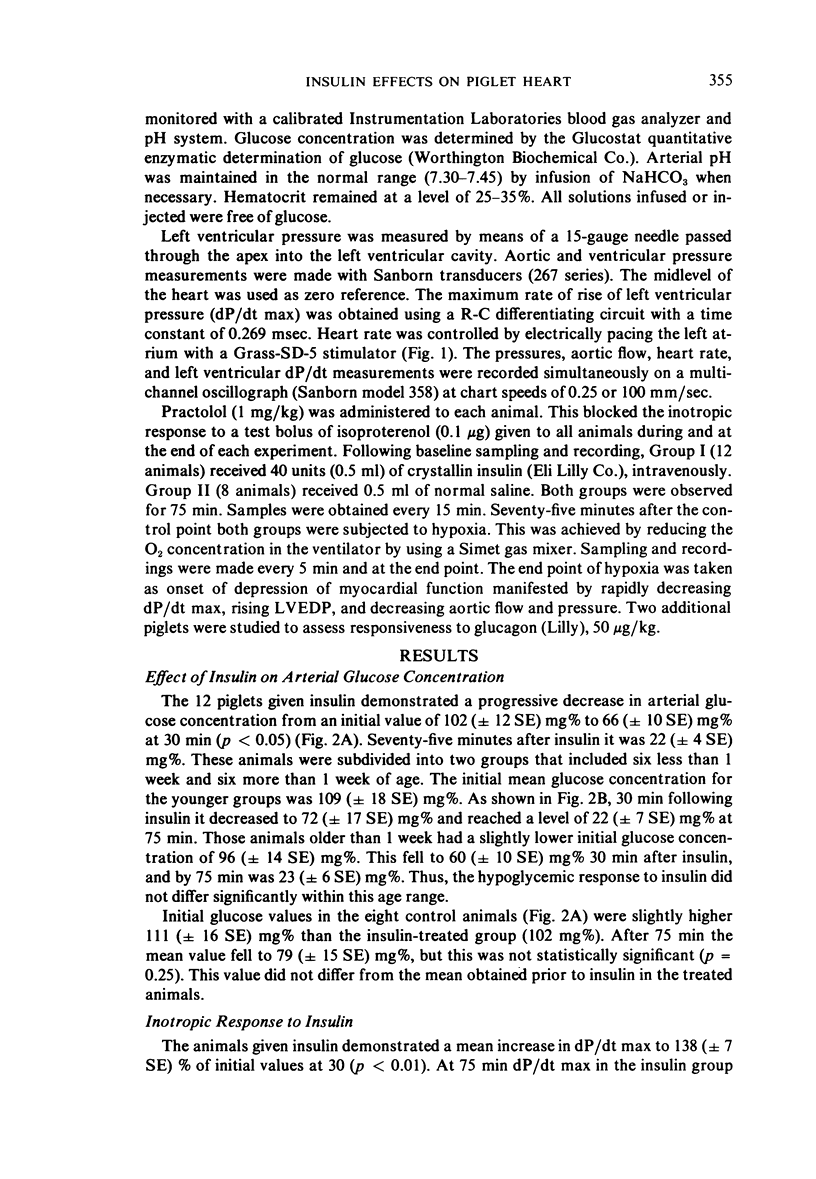
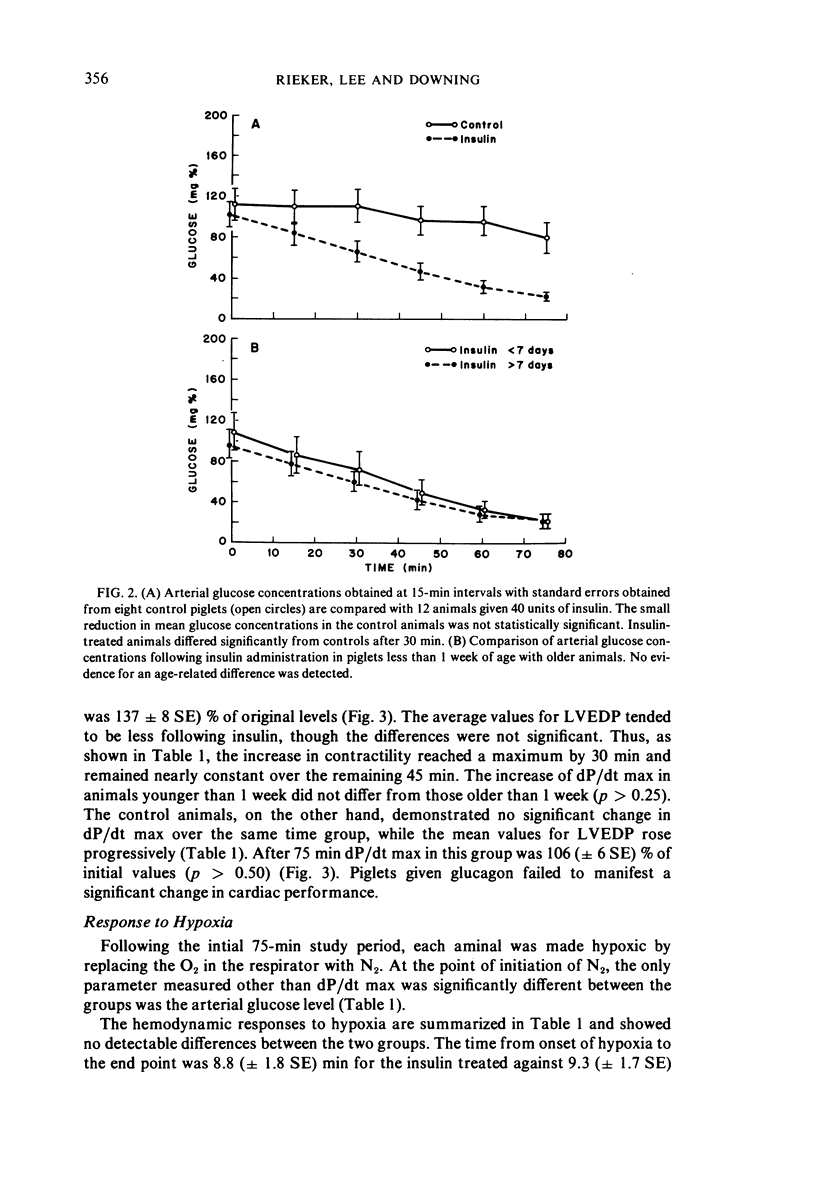
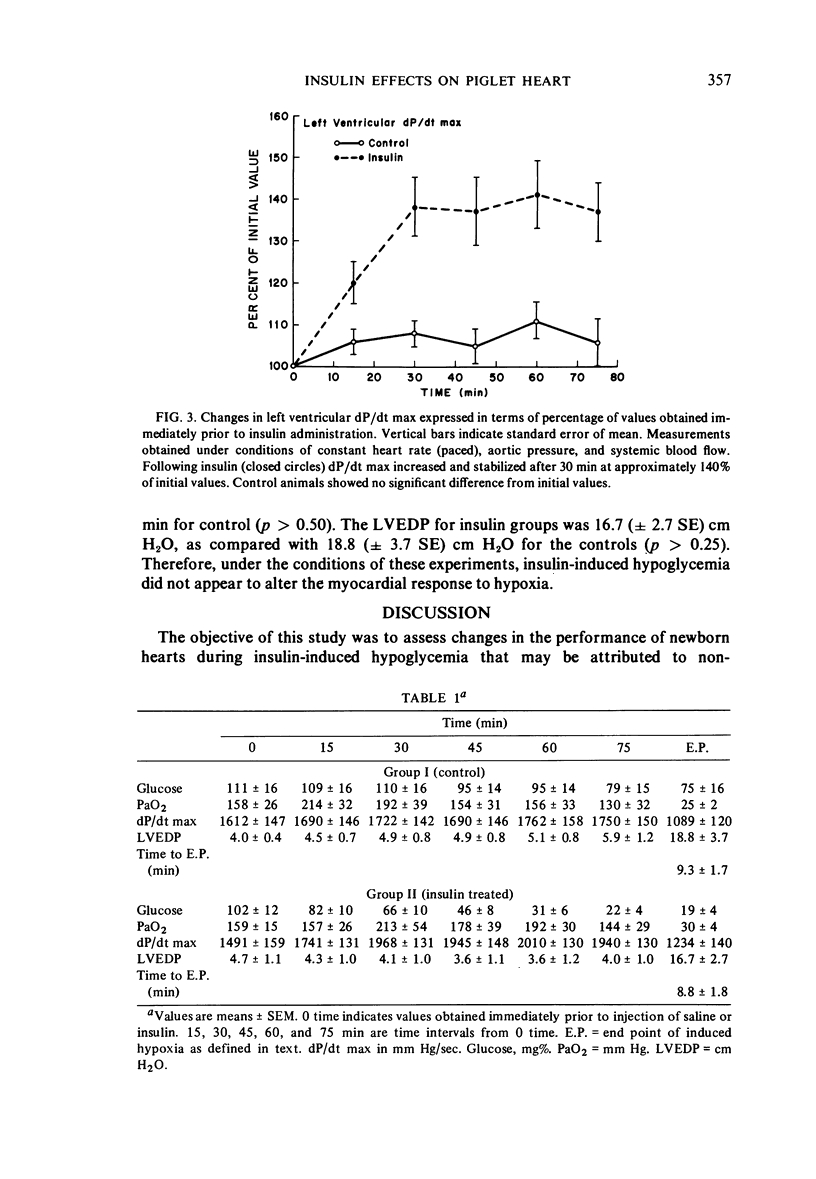
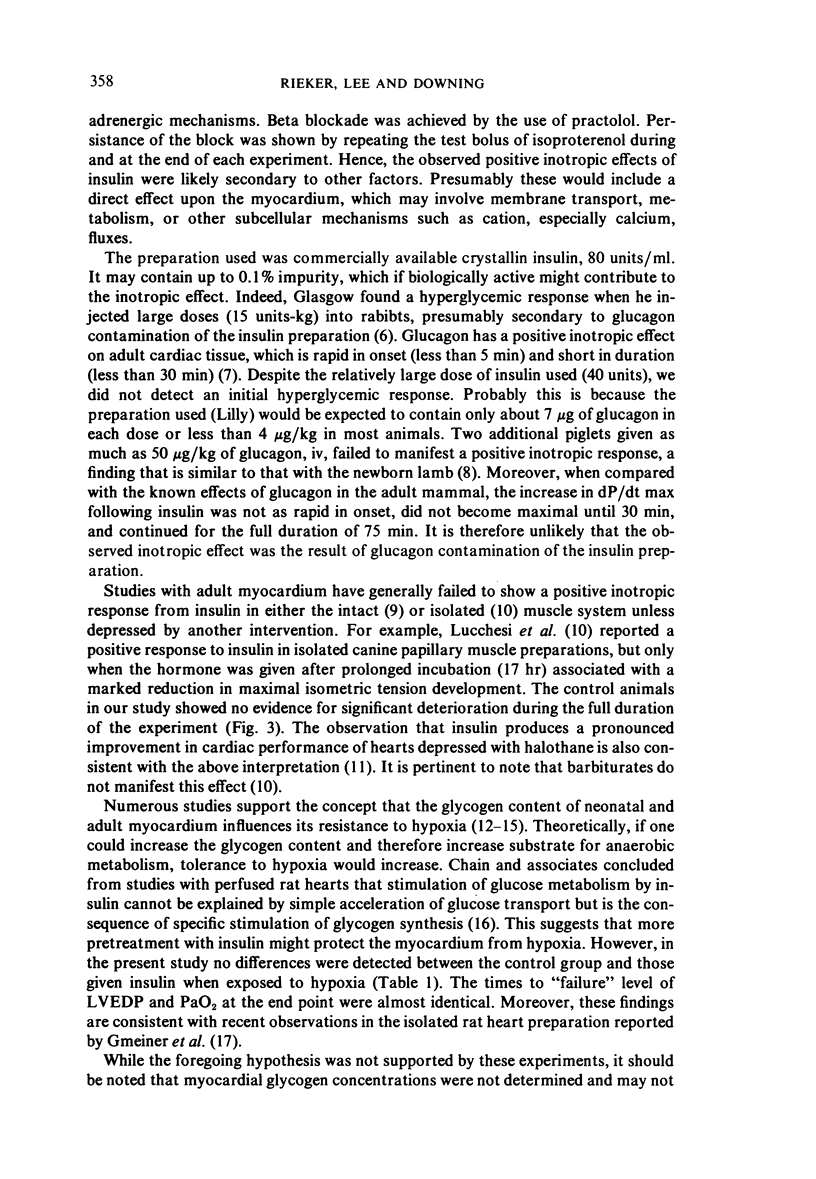

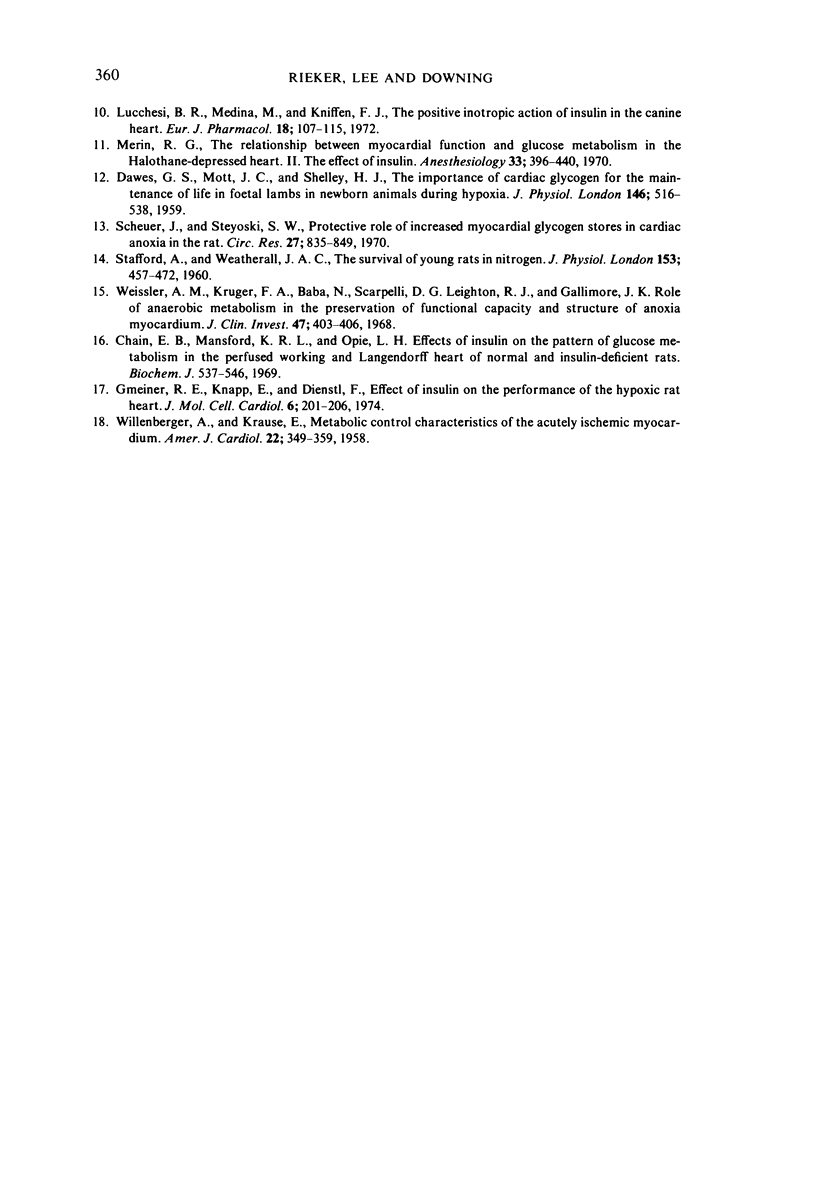
Selected References
These references are in PubMed. This may not be the complete list of references from this article.
- Bayliss L. E., Müller E. A., Starling E. H. The action of insulin and sugar on the respiratory quotient and metabolism of the heart-lung preparation. J Physiol. 1928 Mar 30;65(1):33–47. doi: 10.1113/jphysiol.1928.sp002459. [DOI] [PMC free article] [PubMed] [Google Scholar]
- DAWES G. S., MOTT J. C., SHELLEY H. J. The importance of cardiac glycogen for the maintenance of life in foetal lambs and newborn animals during anoxia. J Physiol. 1959 Jun 11;146(3):516–538. doi: 10.1113/jphysiol.1959.sp006208. [DOI] [PMC free article] [PubMed] [Google Scholar]
- Downing S. E., Talner N. S., Campbell A. G., Halloran K. H., Wax H. B. Influence of sympathetic nerve stimulation on ventricular function in the newborn lamb. Circ Res. 1969 Oct;25(4):417–428. doi: 10.1161/01.res.25.4.417. [DOI] [PubMed] [Google Scholar]
- Ernstene A. C., Altschule M. D. THE EFFECT OF INSULIN HYPOGLYCEMIA ON THE CIRCULATION. J Clin Invest. 1931 Aug;10(3):521–528. doi: 10.1172/JCI100368. [DOI] [PMC free article] [PubMed] [Google Scholar]
- Glasgow A. M. Hyperglycemic response to massive doses of commercial insulin. Diabetes. 1970 Jan;19(1):28–32. doi: 10.2337/diab.19.1.28. [DOI] [PubMed] [Google Scholar]
- Gmeiner R., Knapp E., Dienstl F. Effect of insulin on the performance of the hypoxic rat heart. J Mol Cell Cardiol. 1974 Apr;6(2):201–206. doi: 10.1016/0022-2828(74)90022-4. [DOI] [PubMed] [Google Scholar]
- Lucchesi B. R. Cardiac actions of glucagon. Circ Res. 1968 Jun;22(6):777–787. doi: 10.1161/01.res.22.6.777. [DOI] [PubMed] [Google Scholar]
- Lucchesi B. R., Medina M., Kniffen F. J. The positive inotropic action of insulin in the canine heart. Eur J Pharmacol. 1972 Apr;18(1):107–115. doi: 10.1016/0014-2999(72)90137-9. [DOI] [PubMed] [Google Scholar]
- Merin R. G. The relationship between myocardial function and glucose metabolism in the halothane-depressed heart. II. The effect of insulin. Anesthesiology. 1970 Oct;33(4):396–400. doi: 10.1097/00000542-197010000-00005. [DOI] [PubMed] [Google Scholar]
- PENHOS J. C., KRAHL M. E. Insulin stimulus of leucine incorporation in rat liver protein. Am J Physiol. 1962 Feb;202:249–252. doi: 10.1152/ajplegacy.1962.202.2.349. [DOI] [PubMed] [Google Scholar]
- REGAN T. J., FRANK M. J., LEHAN P. H., HELLEMS H. K. RELATIONSHIP OF INSULIN AND STROPHANTHIDIN TO MYOCARDIAL METABOLISM AND FUNCTION. Am J Physiol. 1963 Oct;205:790–794. doi: 10.1152/ajplegacy.1963.205.4.790. [DOI] [PubMed] [Google Scholar]
- Scheuer J., Stezoski S. W. Protective role of increased myocardial glycogen stores in cardiac anoxia in the rat. Circ Res. 1970 Nov;27(5):835–849. doi: 10.1161/01.res.27.5.835. [DOI] [PubMed] [Google Scholar]
- Stafford A., Weatherall J. A. The survival of young rats in nitrogen. J Physiol. 1960 Oct;153(3):457–472. doi: 10.1113/jphysiol.1960.sp006547. [DOI] [PMC free article] [PubMed] [Google Scholar]
- Visscher M. B., Müller E. A. The influence of insulin upon the mammalian heart. J Physiol. 1927 Mar 15;62(4):341–348. doi: 10.1113/jphysiol.1927.sp002364. [DOI] [PMC free article] [PubMed] [Google Scholar]
- Weissler A. M., Kruger F. A., Baba N., Scarpelli D. G., Leighton R. F., Gallimore J. K. Role of anaerobic metabolism in the preservation of functional capacity and structure of anoxic myocardium. J Clin Invest. 1968 Feb;47(2):403–416. doi: 10.1172/JCI105737. [DOI] [PMC free article] [PubMed] [Google Scholar]
- Wollenberger A., Krause E. G. Metabolic control characteristics of the acutely ischemic myocardium. Am J Cardiol. 1968 Sep;22(3):349–359. doi: 10.1016/0002-9149(68)90119-7. [DOI] [PubMed] [Google Scholar]


